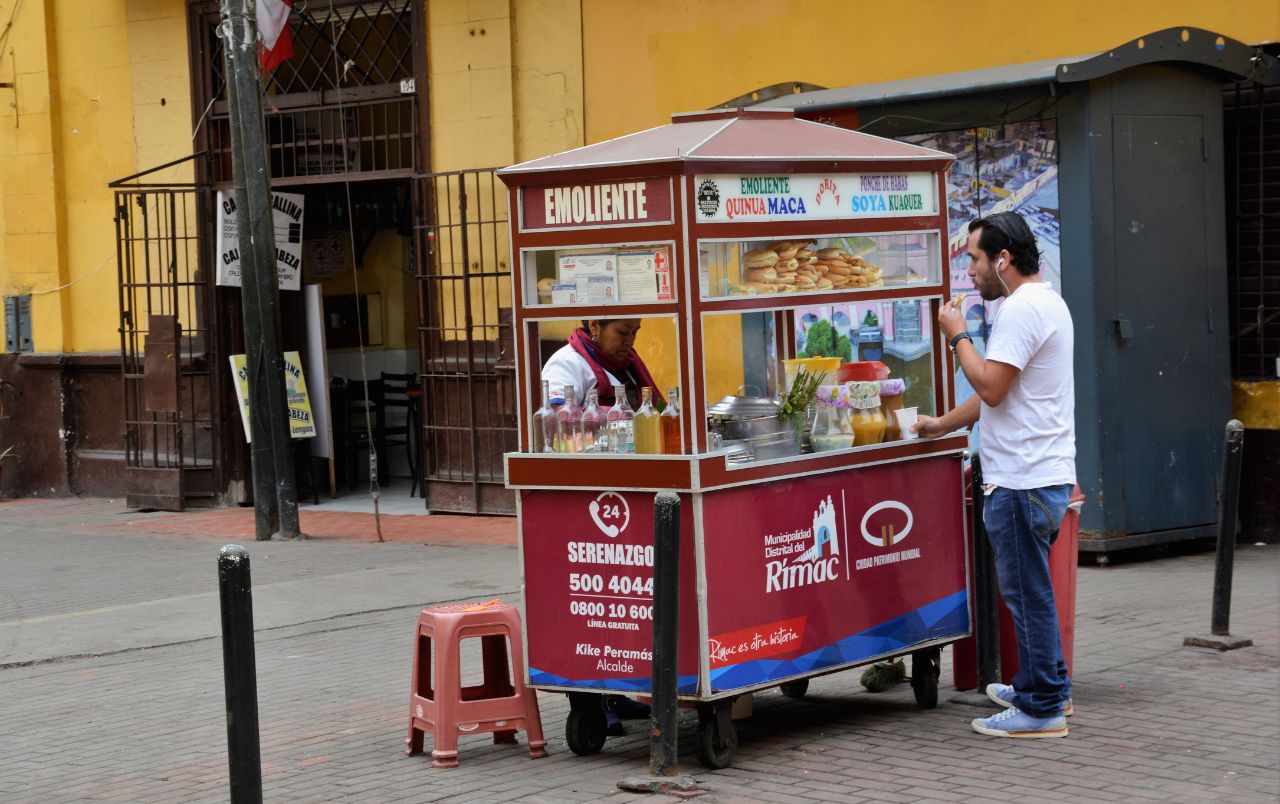Peruvian women spend twice as much time on household and care work: 52.8 hours versus 25.6 hours for men.
Enrique is a 22-year-old internal migrant. He arrived in Lima from a rural province in 2017 and works 92 hours weekly between two jobs. Before the pandemic, Enrique worked four hours in the mornings, five days a week, as an assistant at the warehouse of an elementary school. In parallel, he was studying law at university. He lost his job during the pandemic but could later return to it. But his income decreased from USD$180 to USD$154. It forced him to find an additional job as a guard in a residential building, for which he earned almost USD$386, working six days a week during nights (from 7 pm to 7 am). Enrique increased work hours and income, but his economic situation is inadequate.
Allison, a 26-year-old Venezuelan migrant and nurse, who arrived in Peru in 2018, lost her job as a nanny during the pandemic. Luckily, she almost immediately found work as a live-in domestic helper. As a nanny, she worked 56 hours weekly before and during the pandemic. Her new job, a live-in position due to the quarantine, included cooking, cleaning, and caring for an older woman with Alzheimer’s and her husband. All those tasks and responsibilities did not represent more income: Allison still earns between 1000 and 1500 Peruvian soles per month (approximately USD$386). Given that she did not spend money on rent, transportation, or food, she still saw it as progress.
Migrant workers, national or international, have endured hard times during the pandemic. Although they did not leave the Economically Active Population (EAP), their labour conditions have been more challenging, and they earn less money per work hour. So where are they standing now?
International and internal migrant workers in the labour market
Internal migrants represent a much larger population than international migrants in Peru. Based on a statistical analysis of a pooled sample of the National Household Survey of Peru (Encuesta Nacional de Hogares -ENAHO) for 2018-2021, out of the total sample of migrant workers, both internal and international, 72% of migrants were economically active or part of the Economically Active Population (EAP). It includes unemployed persons looking for a job. There was higher participation of men in the EAP as compared to women.
Also, 40% of the international migrants surveyed resided in Metropolitan Lima. International migrants, mainly Venezuelan, are highly concentrated in large and intermediate cities, with a vast majority settled in Lima.
The proportions of internal migrants differ significantly by region. About 14% reside in Lima, while most (86%) live in other departments.
Over a third of all migrants, internal (35%) or international (37%), work in the occupational group of “elementary occupations”, low-income jobs, including cleaning or domestic services, risky occupations with high physical exertion, such as mining and construction, or street vending and waste collecting. The second most frequent occupational group for both migrant groups is “service workers and shop and market vendors”. In these two most prevalent occupations, there are larger proportions of women than men.
Impact of the COVID-19 pandemic on work and employment
Labour conditions worsened for everybody during the pandemic. For internal migrant workers, at the beginning of the recovery period, the total monthly income decreased by -7.45%, compared to the pre-pandemic stage, recovering slightly by the end of 2021. The monthly number of work hours decreased for September-November 2020 and remained relatively unchanged until the last analysis period. The income per hour dropped by -6.6% compared to pre-pandemic levels before recovering moderately by the end of 2021. However, it remained at -5.01% less than the pre-pandemic period.
The situation was similar for international migrant workers. The total monthly income decreased by -7.35% during September-November 2020 compared to the pre-pandemic stage. There was a recovery of -5.36% by the end of 2021. The monthly number of work hours decreased by -1.25%, almost the same percentage as that of internal migrants and less than the decrease for the total population. It remained at the same level until the last analysis period, recovering to -0.64% by the end of 2021. Regarding income per hour, this type of migrant first experienced a decrease compared to pre-pandemic levels before recovering moderately. This percentage indicates a slightly better situation than for the internal migrants.
Can Peru still achieve SDG 8 and SDG 10?
Achieving Sustainable Development Goal 8 (decent work) and SDG 10 (reduced inequalities) would depend on persevering and increasing state attention to rural areas and the peripherical expanses of urban centres of different sizes (small, medium and large cities). Such effort implicates not only promoting private investment but mostly public investment. The achievement of these SDGs would also depend on the clear recognition that the reception of the South-to-South immigrant population (coming from Venezuela, Colombia, Bolivia, and Ecuador) merits different templates for social and labour policies than the ones designed for countries receiving South-to-North immigration.
About the SVSS initiative
This article is part of Southern Voice’s “State of the SDGs” initiative. It provides evidence-based analysis and recommendations to improve the delivery of Sustainable Development Goals (SDGs). As a collaborative program, it compiles a broad range of perspectives usually missing from international debates. The report aims to fill an existing knowledge gap, enriching the SDG discussions and levelling the playing field with new voices from the Global South.


